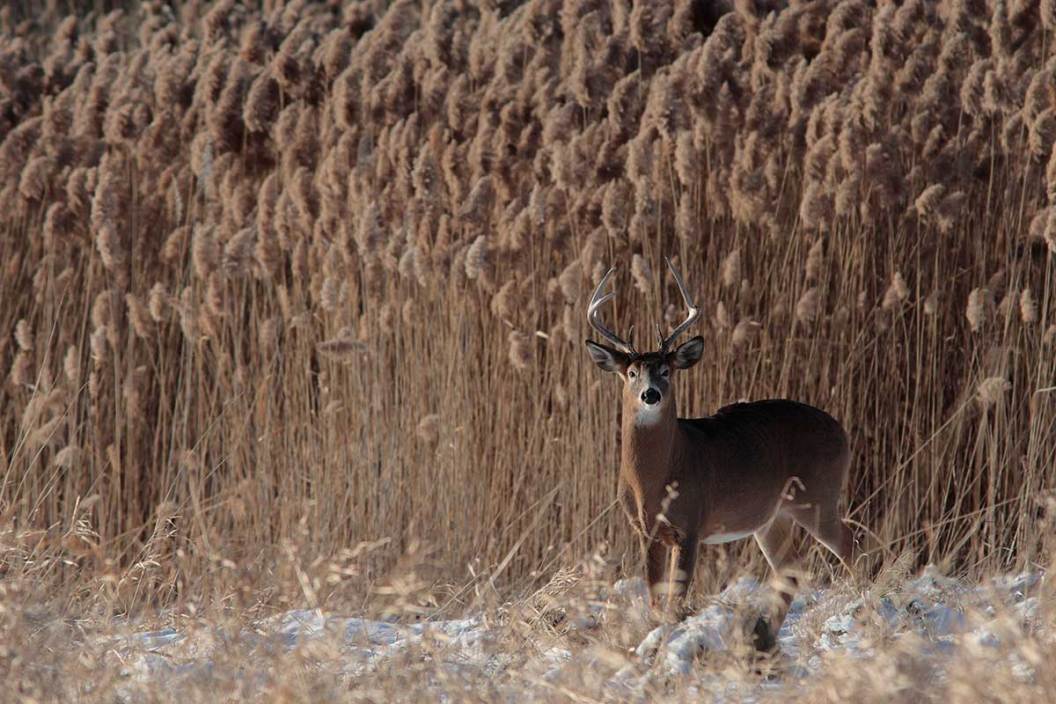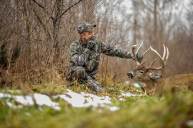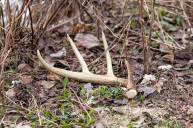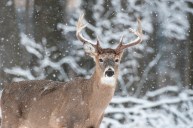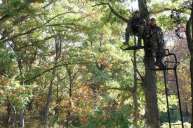There is nothing more aggravating as a deer hunter than sitting in the stand all day and not seeing deer.
When that happens, we try to pull out all the tricks to get deer in front of us. Most of us only have a limited amount of time to hunt, so we have to make the most of it. Thankfully there are a few things that you can do that will give you a better chance of landing a buck before your season is over.
Every hunter has their own methods for figuring out where the deer are when movement seems to dry up, and some of them work better than others. Nonetheless, here are a few things I do or look for when deer are just not showing up.
1. Find the Acorns
If there is one thing I know about whitetail deer, it's that they love white oak acorns. I have seen deer abandon bait piles, food plots, and agriculture fields when the white oaks start dropping. So I know that I can find deer around the patches of white oaks on a property.
The trick is knowing which trees produce the best acorns. It may sound silly, but if you crack open and taste a few acorns from a few different patches of white oaks, they will taste different. Acorns are fairly bitter, but some are less bitter than others. Deer are going to eat the least bitter ones first, since they're the sweetest acorns. That is where you need to be.
Hunting based on acorns can also be tricky, though. Acorn crops can be very different from year to year, and just because a certain tree produces good acorns one year does not mean they will every year. You have to do your homework every season to find out which trees are producing and which ones are the best.
Personally, I always like to shoot a doe or two in the early season. When I start to clean them, I always look at what they have been eating. If it is early enough, there will not be any acorns in there, but if acorns are dropping somewhere, I will be able to tell. This is not the sole reason for killing early season does, but you may as well take advantage of that intel if you have it.
2. Watch Bedding Areas
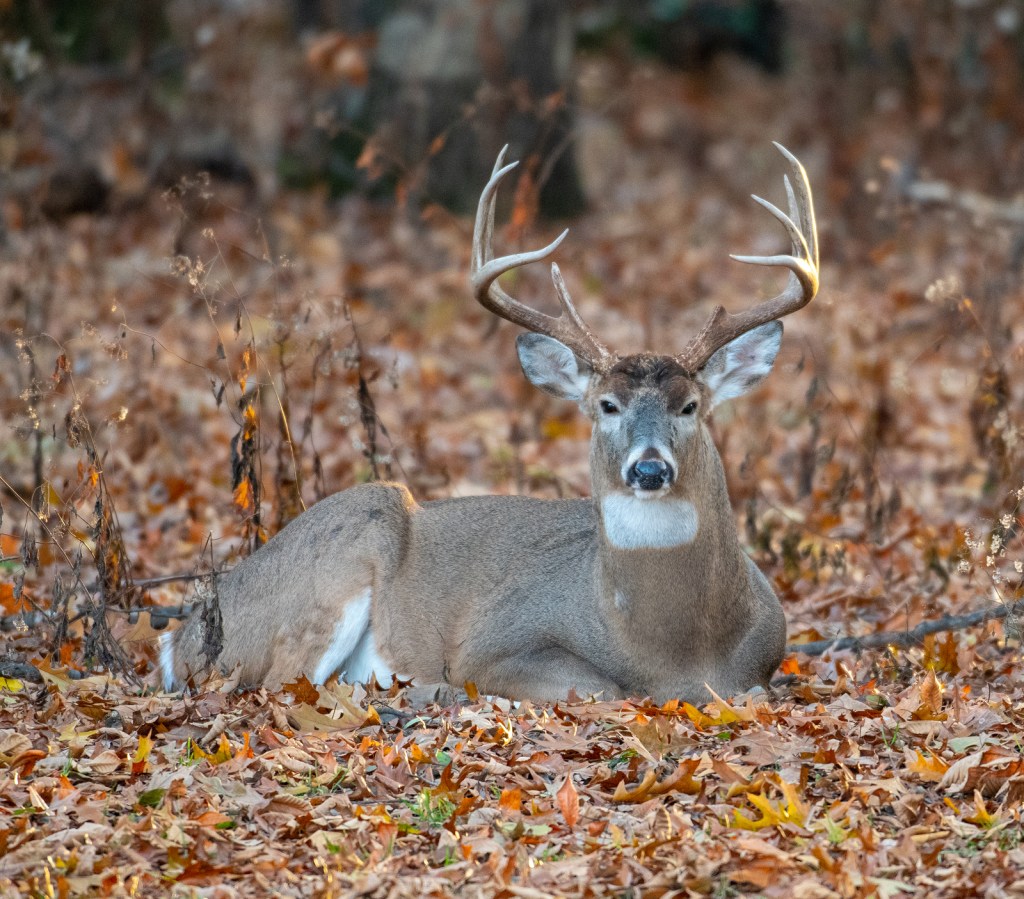
Another thing to watch is bedding areas. Deer are always going to have bedding areas no matter what time of the year it is. If you do not spoil them or disturb them too much, those bedding areas should stay the same year after year.
At this point you are probably asking "How the heck do I find those areas in the first place?" Well, it takes a little effort, but it's not impossible.
Deer love to bed in safe spaces, in areas where they have an obvious advantage. These are places that have super thick vegetation or feature a geographical advantage. Typically you will see deer bed in areas that provide plenty of cover, and allow them to smell, see, and hear surrounding threats easily. If you suspect you've located bedding areas, look for the telltale signs of imprinted, matted down grass or weeds, and once you locate them, try to avoid them as much as possible.
Once you figure out where those bedding areas are you can really capitalize on it by watching the trails leading to and from those bedding areas.
Honestly, we could talk all day about bedding areas. Hopefully, you already have some sort of idea of where the bedding areas are on your property. If you are struggling, look at this article for more information about finding bedding areas.
3. Have Better Scent Control
One reason you may not be seeing deer is because they smell you before getting within sight. I know a lot of hunters love to play the wind and say it is the most important part of hunting, but the wind does not matter if even I can smell you from 10 feet away.
Assuming you have basic scent control figured out, there are a few other tactics that you should use to keep deer from smelling you. The most important thing you can do is take an isolated path to your stand.
If at all possible, you want to totally avoid walking anywhere close to where you expect to see deer. There has been more than one time that I walked down a deer trail to my stand, only to encounter a deer on that very trail. I should have known better, but ideally you're able to avoid such blunders.
You want to take an isolated path to your stand and avoid touching anything. Make your own trail if you have to.
You also want to make sure that you spray your boots down with some scent elimination spray. It is debatable how well these sprays work, but I've found that they are definitely better than nothing.
4. Wait for Weather Shifts
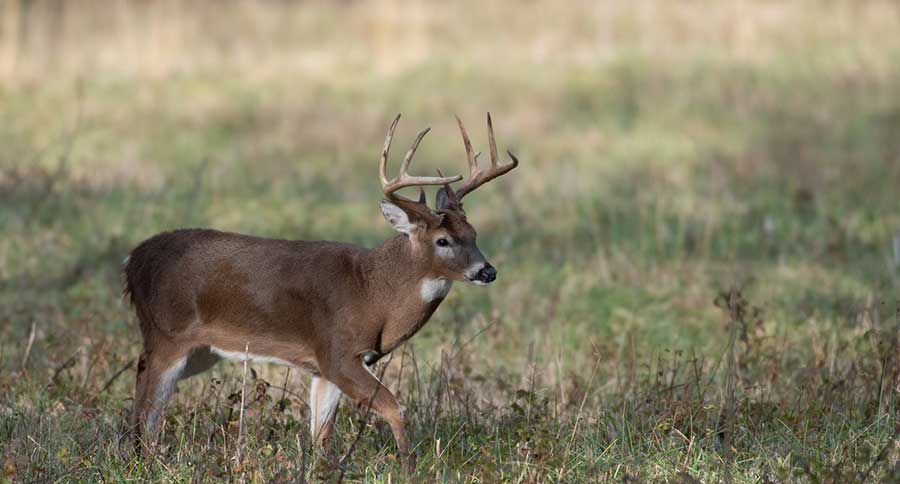
The next thing you can do if you are not seeing deer is to wait for the weather to improve. I know that where I hunt in Georgia, the deer just hate to move in the heat. Granted, it was 75 degrees last Christmas, but when the temperature drops a considerable amount, the deer are going to start moving.
There is no one temperature level that we can look at and say "Oh yeah, deer are definitely going to move because of that." Instead, we want to look at the change in temperature. If it has been 70 degrees for a week and suddenly drops down to 40 degrees, odds are the deer are going to move.
And if doesn't have to be a temp change that matters, either. You can look at barometric pressure and weather pattern changes in the same way. When there is a large change from the typical conditions, you need to be in the deer stand. On the properties I frequent, this is especially true for cold fronts in late October, which can be the best time to be in the woods all year.
5. Talk to the Neighbors
If you really have no idea what to do, there is no better advice than that of your neighbors and other local hunters. Deer hunting advice on the internet can be pretty broad at times, and that is because deer behave differently all over the country. So to get the real inside scoop on what deer are doing in your area, it's the people actually in your area that are the best resource.
Of course, you can reach out to people you actually know personally and talk about the local deer movement, and that can be a good way to grow some relationships with likeminded outdoorsmen and women. However, don't fully discount the power of a laptop and social media. You can look into a couple of Facebook groups or search for Instagram accounts owned by folks in your area, and get some good answers to most of your questions. Do not forget online forums too, the original online interaction venue for the outdoors community.
A Quick Recap
Deer do two things year-round: eat and sleep. If you are having trouble hunting food sources, make sure that you are not missing a good patch of acorns that are keeping deer from the food you are hunting. You should also do your best to find bedding areas on your property and hunt around the trails that lead to them.
Don't forget about minimizing disturbances, and take an isolated path to your stand while you practice good scent control. The final step is arguably the most important tip here: watch the weather. Weather shifts are what make deer move, and if you are on top of it, you can capitalize when there are sharp changes.
Lastly, do a little reconnaissance in the local whitetail community. They can answer all sorts of questions you may have, as well as give you real-time tips on deer movement that you cannot get anywhere else.
Products featured on Wide Open Spaces are independently selected by our writers and editors. However, when you buy something through our links, we may earn a commission.
NEXT: 12 PICKS FOR THE BEST COLD WEATHER DEER HUNTING GEAR FOR WINTER 2021-22
